Are you looking for the best trekking tips for the Everest Base Camp Trek to improve your high-altitude walking experience? Do you want the helpful Everest Base Camp trekking tips, travel hacks, and ideas to make your trip effortless and mless demanding?
I will address those questions in this article with the best trekking practices for planning a trip to the EBC.
Good planning is vital because it advances your travel experience. Since there are a bunch of links on the web, getting the most helpful advice and important things to know for a trek to Everest Base Camp takes time.
Henceforth, this guide will go over several topics and offer some valuable Everest Base Camp trekking tips and ideas from the best guides who have led several groups to Mt. Everest.
- A group of trekkers at Everest Base Camp
Table of Contents
- Best Everest Base Camp Trekking Tips
- Stay Hydrated
- Put on your shoes first.
- Train Enough before EBC Trek
- Option for the Route through the Phortse
- Consider extra days at the end of Everest Base Camp Hike
- Know the weight limits for the Lukla flight.
- Use a professional trekking agency.
- Read the booking conditions and terms of service.
- Expect Flight Delays
- Be prepared for a flight diversion to Ramechhap in the main seasons.
- Carry your pillowcase.
- Carry entertainment items (Uno cards, books)
- Money-Saving Tips for your trip to Everest Base Camp
- Tips for Everest Base Camp Trek Food and Drinks
- Carry your favorite snacks that you always crave.
- Bring your Thermos.
- Carry water purifiers.
- Eat Enough
- Don’t crave non-veg items.
- Avoid smoking and alcohol.
- Bring hydration salts (Diaoralite sachets, Nuun tablets, or whatever you can find locally!)
- Consider taking Multi-Vitamins Tablets (also Vitamin C, Vitamin B Complex, and Garlic).
- Be careful with your food and drinks in Kathmandu.
- Bring some protein bars.
- Sanitation Tips for the EBC Trek
- Packing Tips for the Everest Base Camp Trek
- Carry some good nighttime amenities.
- Carry waterproof garments (i.e., ponchos).
- Prepare yourself for the cold.
- Wear layers of warm, comfortable clothing.
- Don’t pack unnecessary things in your daypack.
- Wear every piece of gear before the trek.
- Bring gloves to protect your hands.
- Remember to bring sunglasses.
- Use trekking poles.
- Medical Safety Tips for the Everest Base Camp Trek
- Consult a doctor beforehand.
- Pack a good first-aid kit.
- Be able to identify headaches.
- Protect yourself from sunburns.
- Have some information about altitude sickness?
- Remember to have acclimatization days.
- Have the best guides back up your trip.
- Make yourself clear about the trails with a professional before the trek.
- Be prepared for the outdoors
- Don’t use oxygen as a tool.
- Have a satellite phone on the team.
- Travel with a team and avoid hiking solo.
- Bring a head torch.
- Maintain a slow pace while hiking.
- Prepare Mentally.
- Get Insured
- Take it one day at a time.
- Other Useful Tips for the Everest Base Camp Trek
- Add a trip to Gokyo Lakes if you have extra days.
- Do not rely solely on ATMs; keep cash on hand.
- Consider Alternates if you have more than a few days.
- Use better lodges along the journey.
- Bring some more money.
- Relax and have the right attitude.
- Talk with the locals.
- Choose the best time to trek.
- Don’t fear the suspension bridge.
- Always respect the local culture.
- Visit Tengboche Monastery.
- Solo Everest Base Camp hiking tips for a safe and enjoyable trek
Best Everest Base Camp Trekking Tips
According to several travel magazines, Everest Base Camp Trek is one of the best trekking adventures in the world.
Therefore, tourists are flooding heavily along the route each year. But what are the best trekking practices for making your trip wholesome?
First, whatever actions you take toward improving your travel experience should correspond with your trekking purpose. That way, you enjoy the trip to the fullest. So, let’s get into the important things to know before trekking to Everest Base Camp.
To find success in your EBC journey, you shouldn’t ignore these 70 successful tips for the Everest Base Camp Trek.
Stay Hydrated
When you are trekking to high altitudes such as Everest Base Camp, your respiration rate speeds up. It’s because your body needs to maintain the blood oxygen level, as there will be less oxygen in the environment. So, you will lose water faster, which can lead to dehydration.
Eventually, you may be a victim of altitude sickness, which can ruin your whole trekking experience. Thus, to maintain the water level in your body, drinking water at regular intervals is mandatory.
According to the Wilderness Medical Society, your body loses twice the amount of water at high altitudes than when you are at sea level, even if you are doing nothing.
Besides, you will walk uphill and downhill for hours. Therefore, sweating is a common thing. Also, to make up for the water lost through sweating, hydration is important.
I used to drink a bottle of water at once whenever I felt headaches coming on. Although mild headaches are normal, drinking water can also relieve these symptoms.
The first thing trekkers should learn before planning an EBC trek is to drink at least 5 liters of water per day. Your urine color should be light yellow. Also, you should urinate at least 8–9 times a day while you are on the trek.
Avoid sickness. Drink more water.
Carrying a water bottle solves the problem. Remember to do it. Recall, this is one of the most important Everest base camp trekking tips.
Put on your shoes first.
One of the best Everest Base Camp trekking tips anyone can give you is to break in your shoes beforehand.
New hiking shoes are often rigid. As you hike wearing them, the boots rub against your feet and take away a patch of the skin layers.
The gap is filled with sweat or water. Now, the pain starts. This is a blister. If you come wearing new hiking shoes directly on the trail, you are likely to experience the same.
So, always test your hiking boots before your trek. Don’t come here saying that you have tested it in the malls. Wear them and go hiking uphill on a trail that has a rocky, irregular surface. Do it a few times. Make yourself comfortable with the boots. Don’t let bad blisters end the trek.
If you bring your regular hiking boots, it’s a win.
Personal Story:
Everyone will be super excited to hike to the tallest mountain. I was too. I bought a new set of hiking boots just to wear on the trails after Lukla. After getting off the plane at Lukla Airport, I put on new pairs of shoes and started the hike.
The boots were comfortable at the malls. But here, while walking uphill, it didn’t cooperate well. Ignoring everything, I kept pushing myself forward. Sadly, I ended up with a blister near my ankle. I can’t describe how much pain it gave me.
I am not the only one who felt so. Here’s an article by Elizabeth on Backpacker about how they dealt with the blisters.
Train Enough before EBC Trek
Preparing yourself better before performing certain tasks is a winning attitude. The same goes here. The EBC Trek is a high-altitude, challenging trek. So, train yourself to be successful at completing the hike.
Training for Everest Base Camp includes improving your cardio, strength, and endurance, and being able to walk uphill and downhill for at least 5–6 hours a day.
Go on a hike to the nearby hill, climb the stairs, or use the treadmills for a few weeks. It’s up to you. Whatever you choose should increase your stamina and make you able to walk uphill with a backpack.
If you feel you are prepared, try some long-distance treks. It should give you an idea of whether you are trained.
Training is the most helpful and one of the highly recommended Everest Base Camp Trekking tips.
Option for the Route through the Phortse
From Namche, two primary routes take you to the base camp. One is the classic and popular Everest Base Camp Trek Package, and the other is the route from Phortse.
The second route is less crowded and also gives extraordinary views. However, if you trek through Phortse, you miss the Tengboche monastery on the way. To recover the loss, you may return from the base camp via the route to Tengboche monastery.
If you trek through Phortse, remember it’s more remote and doesn’t have great accommodation facilities on the way.
Consider extra days at the end of Everest Base Camp Hike
The weather in the mountains is sometimes unpredictable. We book the return flight to Lukla earlier. But sometimes the weather challenges the flights to take off.
In such a case, spend a night or more in Lukla until the weather settles. Although you can trek to Salleri and drive to Kathmandu, it takes a few days as well. If you have extra days, it will be worry-free. You don’t miss your international flight either.
So, always consider the extra days in the end. If you have extra days in the beginning, then also shift it to the end. If everything worked as planned, then you can enjoy a sightseeing tour in Kathmandu.
Know the weight limits for the Lukla flight.
Domestic planes have a total weight limit of 15 kg (33 lbs) (5 kg in a hand-carry bag and the rest in suitcases). So, when packing your bags, leave unnecessary things at your place or in a hotel in Kathmandu. When you are buying something, such as a water bottle, look for lightweight items.
You can also increase the allowed baggage weight by paying a few extra dollars. However, we don’t recommend doing so. It’s because, most of the time, the increased weight will come on a separate flight. So, it keeps you waiting at the Lukla airport just to receive the bag.
Also, the extra baggage has to be carried by you or the porter up to the mountains from Lukla. It adds a burden. Hence, stay within the weight limits.
Use a professional trekking agency.
Our pro tip for you is always to search for a professional trekking agency while planning the trek. First, look at whether the trekking agency is registered with the government of Nepal or not.
Second, check if it has a valid website, social media handles, etc. Third, you can also look for the reviews past customers have left on the company website.
Don’t fall for scams. If you still know an independent guide, then we suggest you use an agency, either. They have better connections with airlines, hotels, and everything. Thus, it will come in handy in emergencies.
Here’s why booking with a travel agency is beneficial for you instead of trekking solo.
Likewise, here’s how you can check the legitimacy of a trekking company in Nepal.
Read the booking conditions and terms of service.
Always go through the booking conditions and terms of service before you confirm the trip. Every Everest Base Camp Trek company has terms and conditions displayed on its website.
Go through them all. Be aware of all the terms like trip cancellation, postponement, and change in itinerary.
Determine how much you will lose in the event of trip cancellation or postponement. So, if such a thing happens, you don’t have to bargain to get your money back. This is a highly recommended thing to do before hiking to Everest Base Camp.
Expect Flight Delays
Inclement weather, uncertain rain, thick fog, or strong winds affect the visibility of domestic flights in Nepal.
Also, the Civil Aviation Authority of Nepal (CAAN) has directed airlines not to operate flights until the weather is clear at the destination airport.
Lukla Airport is one of the high-altitude airports in the world. The weather in Lukla is primarily unpredictable. So, you can expect flight delays for a few hours to one or two days.
It’s good to research a bit about the weather forecast at Lukla before the start of the trek. So you can plan the trip accordingly.
Not to worry, if you have booked your Everest base camp trip with Heaven Himalaya, we will organize alternatives. The replacements will be based on the emergency you have. It may be a helicopter trip, scheduling the next available flight, or taking the road trip to Salleri.
Be prepared for a flight diversion to Ramechhap in the main seasons.
Ramechhap Airport can be called an alternative to Tribhuvan International Airport for Lukla flights. The small runway is a 4-5-hour drive from Kathmandu.
During the main trekking season in Nepal, there will be many trekkers flying from Kathmandu to Lukla, which will increase air traffic. To diversify the traffic flow, the Nepal Aviation Authority sometimes diverts the Kathmandu to Lukla flight from Ramechhap.
In such a case, drive to Ramechhap, around 140 km from Kathmandu, in the early morning. Upon reaching Ramechhap, you can board your flight to Lukla. The flight time to Lukla from here is only 12-20 minutes, compared to 40 minutes from Kathmandu.
Although your flight route has changed, this doesn’t affect your tour itinerary. It will remain as it is unless the flights are canceled.
Carry your pillowcase.
We always interview trekkers after the completion of their trek. Most often, we ask about the challenges, things missed, and many more. Most of them have different answers about how they felt about the trip. But, one thing we found is that about 60% of people feel comfortable sleeping with their silk pillowcases.
In particular, female trekkers always crave their pillows. Some have reasons for their rugged hair, while a few are allergic and don’t find sleep comfort in the mountains. Those who carry their pillowcases have no complaints at all.
So, if you have a little space in your bag, you may add your pillowcase. Although the pillowcases you have in the guesthouses are neat and clean, having your pillowcases can help you get a restful night’s sleep.
Carry entertainment items (Uno cards, books)
Sometimes you just want to relax and have fun with your trek teammates after a long, tiring day.
Although technology has taken over face-to-face interactions, sometimes sticking to childhood games gives us immense pleasure. Also, the internet is slow and expensive.
Thus, open a deck of playing cards and distribute them with your teammates to play a good game. It’s one of the best ways to spend the night before bed. Not only do you enjoy the game, but you also develop a strong bond with your trek mates. It’s a great tip if you are traveling to Everest base camp with friends or in a group.
If you are a solo traveler, open your favorite book and enjoy reading amidst the tallest mountains in the world.
- Four trekkers in Everest Base Camp
Money-Saving Tips for your trip to Everest Base Camp
Buy the gear in Kathmandu.
Although you don’t need any special climbing gear, you need warm hiking clothes, hiking boots, trekking poles, and other basic trekking gear for the Everest Base Camp Trek. It can be a bother for you to travel to different places or place orders at various online stores.
Remember, you can buy every piece of gear in Kathmandu. The reason I am advising you to buy gear in Kathmandu is that you will get it cheap and all in one place.
Buying gear in Kathmandu is one of the best money-saving tips for the Everest trek.
Besides, by buying gear in Kathmandu, you help those Nepalese earn a living.
Look for cheap flights to Nepal.
Flight tickets are going to be your biggest expense on the Everest Base Camp Trek. So, always look for hacks and tricks to get cheap flights. You can, for example, keep longer transit times or book flights at a later date.
Remember to carry solar chargers, battery packs, or extra batteries.
Batteries drain fast in cold regions. We request travelers keep the batteries close to their bodies while sleeping and walking in the cold.
When your gadget batteries are dead, you might face a problem. In the guesthouses, you pay for using the electricity. But in peak seasons, you may not find charging points because of many people looking for the same opportunity.
So, it’s better to carry a solar charger, battery packs, or extra batteries for your gadgets while on an Everest Base Camp Trek. It’s money-saving advice and also prevents the hassle of looking for charging points.
Include coverage for helicopter evacuation in your insurance.
There’s no option to take you out of the mountains other than using helicopters when you have to be rescued immediately.
The helicopter costs are expensive as it has to fly between the hills and the mountains. Thus, while you buy an insurance package, make sure you add the helicopter evacuation coverage as well.
Tips for Everest Base Camp Trek Food and Drinks
Carry your favorite snacks that you always crave.
Staying energized while trekking in Nepal is not a simple task. You burn a lot of calories. To recover from the loss, you take snacks during the day.
Although you will have enough food in the guesthouses, you may not find the snack you are longing for. It’s also pricey. So carry a few of your favorite snacks to eat during your hiking journey.
Taking a bite of your favorite snack after a long hike can help you stay fueled.
Bring your Thermos.
The mountains are always cold. To help you fight the cold, you carry enough gear. But, the addition of a thermos water bottle or a thermos flask can be a cherry on top.
Buy hot water from the guest house and carry it along with you in a thermos. When you feel cold, you can take a sip from it.
The thermos will also help keep drinks hot for a longer time if you are fond of hot beverages like tea.
Carry water purifiers.
Bottled drinking water is expensive along the Everest Base Camp route. But you can always find free water taps in the guesthouses we use.
So, one better alternative to avoid expensive bottled water is to refill the bottles with tap water and use water purifiers. You can use Steripen, chlorine/iodine tablets, or some other filtration systems. No wonder it’s one of the most helpful tips for the Everest Base Camp Trek.
Besides, by not buying an extra plastic bottle, you contribute a lot to the environment.
Thus, be an excellent human being. Carry water purifiers. Save your hard-earned dollars. Save the environment.
Eat Enough
You burn a lot of calories while trekking at high altitudes. Eat enough to restore the energy you used while walking. Don’t be picky about food.
First, consume enough carbohydrates. It helps you improve strength and endurance and delays fatigue. Then look for fats and proteins. You should eat a combination of 60% carbohydrates, 30% protein, and 10% fat.
Besides, some people carry zinc, iron, and protein tablets with them to supply additional nutrition required by the body during the Everest Base Camp adventure.
Eating enough food is the only way to replenish lost energy while trekking on Everest. Hence, maintain a good diet of nutritious and healthy foods in EBC.
Don’t crave non-veg items.
Non-veg items have a large amount of protein in them. And, you might know, our bodies take a lot of time to digest protein. While hiking to the Everest Base Camp, your body is already under pressure because of the high altitude. And proteins will add another burden that can ignite altitude sickness such as HAPE.
Also, people who have non-vegetable items while trekking complains of indigestion and acidity. So don’t take a risk. Instead, eat healthy vegetarian foods.
In addition, they store meat products in the high Himalayas for a long time, which is not healthy. As a result, avoid using meat products.
Avoid smoking and alcohol.
Enjoy the beautiful scenery and snow along the journey rather than drinking alcohol and smoking. Why do we need to invite problems when we are enjoying a mountain adventure?
Thus, one of the best tips that I can give for the Everest Base Camp Trek is to say NO to alcohol and smoking when you are hiking at high altitudes.
Travel has changed according to time. People keep bottles of alcohol and packets of cigarettes instead of clothes in their travel bags. I know we need something to keep us warm in the cold, but alcohol should not be an option.
Smoking and drinking alcohol may invite problems like acute mountain sickness, hypothermia, dehydration, and migraines, and also affect the metabolism process.
For better health, Australia also requests that you avoid smoking and drinking alcohol to minimize the risk of altitude sickness.
Travel safely and enjoy nature, not alcohol and smoking.
Bring hydration salts (Diaoralite sachets, Nuun tablets, or whatever you can find locally!)
Oral rehydration tablets are an extremely important thing to carry while going on a long, strenuous trek. These tablets are proven to absorb and keep fluids effectively. It’s just a lightweight addition to your first aid kit. So, don’t forget them.
While it’s extremely important to drink at least 4-5 liters of water each day, sometimes it’s not enough. The human body dehydrates faster in high altitudes. Henceforth, some days you need rehydration tablets to overcome the loss of water from your body. Follow these tips to prevent rehydration while hiking.
Consider taking Multi-Vitamins Tablets (also Vitamin C, Vitamin B Complex, and Garlic).
We don’t recommend this to everyone. If your body is weak and you are very picky about your food items, then you should add multivitamin tablets to your backpack. It can make a vast difference.
Eating healthily with all the nutrients your body needs is a challenge while you are on the Everest Base Camp Trek. So consider taking 1 tablet of a multivitamin each day to make your immune system strong.
Remember, you need to finish the trek anyhow after you have started.
Be careful with your food and drinks in Kathmandu.
“Good food, good mood.”
Remember, the Everest Base Camp trekking route is 64.2 miles long. Your mind and body should be in the right place to complete the entire journey. Food is one of the major things that influence your mood and health.
Good food can help you feel better and happier, and it enables you to tackle more miles on the Everest Journey. Thus, you should be careful while choosing foods in Kathmandu. Some of the best food safety tips are:
- Don’t eat street food before your trip.
- Don’t try new unknown dishes.
- Avoid oily and spicy foods.
- Don’t eat heavy meals.
- Do not over-drink and smoke.
Following the above advice while selecting your meals in Kathmandu before the Everest trip will keep you healthy for the coming days.
Bring some protein bars.
You get enough options for food while you are on any mount everest tours with Heaven Himalaya. The food items have also been upgraded over the years and are healthy as well. Despite that, you may not find the right food you used to have back in your home.
We also don’t recommend having meat on the Everest trail as it has to be carried by an animal or a porter up and stored for a long time. It’s not healthy at all.
But you need an additional boost each day to walk for miles. Therefore, we recommend bringing protein bars that can help you regain protein and keep you strong.
Sanitation Tips for the EBC Trek
Be prepared to squat while using the bathrooms.
More often, you will find squat toilets in the guest houses along the Everest trail.
Using a squat toilet differs slightly from using a Western toilet. It is used by squatting rather than sitting. If you have the habit of spending a long time on the toilet, it will be difficult for you.
Be prepared for an uncommon experience.
Bring toilet paper and wipes.
While there will be toilet amenities such as toilet paper, soap, etc. in the guest houses in the low altitudes, you may not find those in the upper regions.
Although the guesthouses do their best, they may not meet your standard requirements. At a water facility, you will find a water bucket that is used to flush and wash.
Thus, come loaded up with toilet paper and wipes.
Cover the nozzle of your water bladder.
This is a very useful tip! While you are on your way to Everest, make sure you cover the nozzle of your water bladder with a bottle. The trail to base camp is dusty. Animals and people both use it the same way.
So, the animal feces, dirt, and bacteria might touch the nozzle of the water bottle while you keep the bag on the ground. Keeping your mouth on the same nozzle again is a scary thought.
Make sure you cover the water bottle nozzle when you aren’t using it. Also, if you forget to cover the outlet, we recommend using sanitizers before using them again.
Bring some dry bags.
Dry bags are extremely helpful while you are on any trip to Mount Everest. If you have something to throw in the dustbin, you can keep it in the dry bags before you find a dustbin.
Likewise, there are no proper laundry facilities on the Everest Base Camp route above Namche. But your dirty clothes and socks have to be changed.
Will you throw these in the dustbins? Or keep them along with clean clothes? You won’t prefer doing both. So, carrying some extra dry bags will help you keep the dirty clothes separate from the clean ones.
Consider carrying a few dry bags. It doesn’t add much weight to your bags.
Carry some dry shampoo and soap.
You won’t find good bathrooms and toilets in the Everest region above Namche. Plus, the water is freezing. So, you are much more likely to catch a cold when you bathe. So here are some tips and tricks to make you feel fresh while trekking Mt. Everest.
One of the best alternatives to bathing in the Everest region is using wet wipes and some dry soap and shampoo.
When you use dry shampoo for your hair, it lifts dead skin cells, dirt, and other debris off of your scalp. Some other cleanliness tips for the Everest Base Camp trek include:
- Carry travel toothpaste and a toothbrush.
- Females should carry tampons or pads. Menstrual cups such as the Diva Cup or Lena are also some good options.
- Pack toilet paper and Ziploc bags.
- Don’t forget to pack a lightweight towel and a washcloth or bandana.
If you have long hair, put it into a braid.
This is the most important tip for female hikers.
It’s normal not to get a bath for a couple of days when you are on a long hike to Everest Base Camp. If you have long hair, it gets dirty easily because of the dusty roads. To avoid having your hair hardened because of the dirt, put it into a braid while hiking.
Braids are effortless. It keeps your hair neat and clean and also prevents it from becoming messy while you are on the trail.
When you come to the guesthouse in the evening, you can unfold your hair.
Want some inspiration for braided hair?
You can try any type of style, from the side braid, the French braid, the fishtail braid, and the regular plain Jane braid.

Braid hair
Packing Tips for the Everest Base Camp Trek
Carry some good nighttime amenities.
Although the rooms in the guesthouses are comfortable, you may need some extra gear to get a good night’s rest.
The room will have two beds that have mattresses, pillows, and sheets. Also, you will get blankets. However, the blanket will not keep you warm enough against the mountain chill.
So bring thermals and a warm sleeping bag with you. When trekking with Heaven Himalaya, we offer you a 20-degree sleeping bag that has to be returned to us after the trek.
Besides, different people have different sleeping habits. Some prefer a silent room, while some are heavy sleepers. If you are a light sleeper, then bring two earplugs. A piece of cotton will also work. It’s because the room wall is thin and noises from the other room might disturb you.
Carry waterproof garments (i.e., ponchos).
When walking, it’s necessary to keep yourself dry. Make sure you carry waterproof garments with you. Otherwise, you will end up swimming in your perspiration. Also, there’s a real risk of suffering from hypothermia if your body is exposed to cold water for a long time.
Besides, if it’s light rain, then you have to continue trekking, so carry clothes that protect you from the rain. Some rain gear for the EBC Trek includes a waterproof jacket and trousers, waterproof boots, backpack covers, etc.
If you are trekking in the monsoon season, waterproof garments are a must. But, if it’s the other season, then we also advise you to have some waterproof clothes with you.
Sometimes, the weather drastically changes out of nowhere. We don’t know what it’s going to be like in the coming days.
You should be prepared to take on the rain for an Everest Base Camp Trek.
Prepare yourself for the cold.
The mountains are always cold, be it summer, winter, spring, or fall. Tackle the cold that is reaching out to you. If you by chance get caught in the cold, not only will you have terrible experiences while trekking, but it also deteriorates your health status.
But, if you have the right gear, you can easily stay warm and safe. Here are some guidelines you can follow:
- Dress in layers.
- Wear a warm hat and hand gloves.
- Keep your bottled water warm.
- Use sunscreen even on snowy days.
- Use sleeping bags during the night.
If you are going on an Everest base camp trek in winter or during the monsoon, then be extra prepared for the cold and snow.
Besides the above hints and tips, remember to use light and comfortable gear that protects you from the cold outside.
Wear layers of warm, comfortable clothing.
The best packing tip for the Everest Base Camp Trek is to pack clothes that can be dressed in layers. Remember that the region is cold. So, dress in layers to protect yourself from the cold.
Also, the other benefits of dressing in layers are that you can remove or add on clothes when you get hot or cold, respectively.
Dress in three layers: the base layer, mid layer, and outer layer.
The base layer should contain smooth inners such as merino wool tops and bottoms. The mid-layer comprises light fleece shirts and pants or similar. On the outer layer, you can choose to wear waterproof breathable jackets and similar.
The weather can transform. Sometimes, the forecasts cannot make right. So, prepare for the trip with every kind of clothing.
Don’t pack unnecessary things in your daypack.
A daypack is your bag that you have to carry yourself while trekking. A daypack contains your important things such as cameras, phones, documents, water bottles, and others.
When trekking with Heaven Himalaya, you will have a porter to carry your bag. So, keep all your clothes and other gear in the duffel bag provided by the company.
Make your daypack as light as possible, so it won’t be a problem for you while walking uphill.
Wear every piece of gear before the trek.
This is a very important tip! Make sure all your hiking gear works well and you know when and how to use it.
When you get every piece of equipment in place, try every piece. This way, you will find out how wearing such clothes will feel.
You will know if it’s tight, loose, or uncomfortable for you by any means. When you know it’s not comfortable for you before the trip, you can exchange it or get a new one.
Also, we recommend you do at least a short hike in your home location wearing all the equipment you bought for your Everest Base Camp Trek. You will know how it’s going to be when you are on the actual trip.
Bring gloves to protect your hands.
Walking in the cold may have a hazardous effect on the body. Hands are the first contact with a cold and so they’re affected first.
Your brain attempts to keep the internal organs warm when it is freezing outside by increasing blood flow to the body. As a result, it decreases blood flow to your hands and impairs their movement. Exposing your hands to cold for a long time makes your hands numb.
Wearing gloves is the best way to protect your hands, especially from cold-related injuries. Thus, use warm gloves while you are on the trek, especially when you are above Namche.
The best advice for you is to wear gloves in two layers. This is one of the underrated travel tips for the Everest Base Camp Trek.
The outside layer will be thick to resist cold, while the inner gloves will be soft so that you feel comfortable using your hands while you have gloves on.
Remember to bring sunglasses.
Sunglasses are a cool addition to your packing list for Everest. It’s essential to protect your eyes from direct UV rays. So, don’t forget to include them.
We recommend bringing Category 4 sunglasses, as they have dark lenses for extreme glare or intense sunlight conditions.
Use trekking poles.
Carrying trekking poles is the best travel tip anyone can give you for the Everest Base Camp Trek.
The poles make a significant difference while walking uphill and downhill for miles. It reduces accumulated stress on the feet, legs, knees, and back by sharing loads.
If you have slight pain in the hips or the knees, it increases endurance and power to make you able to walk properly.
Likewise, it helps to balance the uneven Everest trail. Thus, we highly recommend you have a good trekking pole while trekking to Mt. Everest.

A visitor using trekking poles to walk on the Everest Base Camp route
Medical Safety Tips for the Everest Base Camp Trek
Consult a doctor beforehand.
You don’t plan a 14-day long trek in the mountains overnight. You take time to research the process, agencies, and a lot more. While you have time, visit your doctor too. Before visiting Nepal, inquire about the consequences of the long high-altitude trek and seek medical advice.
Also, develop a better understanding of the basic high-altitude-related illnesses and the physiology of adaptation while on the Everest Base Camp route.
Here is basic medical advice for high-altitude travelers:
Pack a good first-aid kit.
Over the years, we have sent over 100+ groups to Everest Base Camp in Nepal. What we have noticed is that most trekkers don’t care about maintaining a good first aid kit.
Hence, they end up having problems because of not being prepared for unseen medical conditions.
It’s a long trek. Having minor foot injuries, mild headaches, and light altitude sickness is common. So we highly recommend you have a general first aid kit while on the trek to Everest Base Camp.
Your kit should serve you by looking at your past medical history and general physical condition. Some of the common things to include in the first aid kit are:
- Antiseptic wipes
- Antibacterial Ointment
- Fabric Bandages
- 1″ * 10″ medical adhesive tape
- Pain relief medication (ibuprofen/acetimeniphrin)
- Blister treatment supplies
- Diamox tablets, etc.
Recall that a first aid kit is very important for the Everest trek.
Be able to identify headaches.
Headaches while trekking to the Everest Base Camp has an incidence of about 25–62% through many case studies.
Mild headaches are common. But travelers often refer to altitude sickness.
Some other reasons for headaches can be sinus headaches, migraines, tension-type headaches, frontal tension headaches, etc.
Thus, when you develop a symptom of headaches, don’t panic. First, be able to identify your type. Then, treat it accordingly.
If you don’t know about the symptoms, you can ask your guide about them.
We at Heaven Himalaya deploy trained guides who can handle medical situations like these. One way to prevent mild headaches on the Everest Base Camp Trek is to drink a lot of water regularly.
Here’s a case study on the characteristics of headaches at high altitudes.
Protect yourself from sunburns.
One of the best beauty tips for the Everest Base Camp Trek is to apply sunblock while walking in the sun.
The high-altitude EBC trail is exposed to the sun. Besides, you walk for a longer period. Therefore, one can be the victim of painful sunburns if not taken care of.
When I returned from the same trip last year, my skin was all dark and it developed rashes and cracks. I had to seek medical advice as soon as I returned from the Everest trail.
Black skin isn’t a problem here. Prolonged exposure to the sun leads to sunburn and, in the long term, may also lead to skin cancer and other vital skin problems. So, take care of your skin while on a trip to Everest.
Here are a few ways to protect your skin from sunburn on the Everest Base Camp Trek:
- Use sunscreen.
- Put on UV Protection Sunglasses.
- Wear long-sleeved clothes.
- Always keep yourself hydrated.
- If you have sensitive lips, use lip balms with a UV rating.
Have some information about altitude sickness?
The first and most important tip for Everest Base Camp trekking is to be prepared for altitude sickness. You should understand how you are likely to get it and what the symptoms, precautions, and medications are.
Altitude sickness is a condition of low oxygen transport in your body. It results in serious threats, including death, if not known early.
Here are some symptoms of altitude sickness:
- Dizziness
- Headache
- Loss of appetite
- Fatigue
- Shortness of breath
- Sleeping problems
- Nausea
- Vomiting
If you get any of these symptoms when hiking to Everest Base Camp, then explain it to your guide. He will give you medications or helpful tips or techniques to overcome them.
Don’t push yourself to reach your destination. Have some patience and fear altitude sickness.
Remember to have acclimatization days.
Don’t just rush to get recognition for trekking to the base of the highest mountain. Go on a slow hike.
Remember to have acclimatization days. Include days of rest in Namche and Dingboche.
The higher you go, the less atmospheric pressure there is. As the air gets thinner, the concentration of oxygen also decreases. You will then feel the symptoms of altitude sickness.
This is where acclimatization days come into play. It will accustom your body to lower oxygen levels when spending some time in the same place.
Here are some reasons acclimatization helps to lower the chance of getting altitude sickness.
- It increases the breath rate.
- Red blood cells will be added to the body when you spend some time.
- Your body releases more enzymes to help release oxygen to tissues from red blood cells.
- Taking rest for some time also increases pressure in arteries, which increases blood flow to the lungs.
Acclimatization days are the most useful to lower the chances of getting altitude sickness. So, set aside a few days for acclimatization.
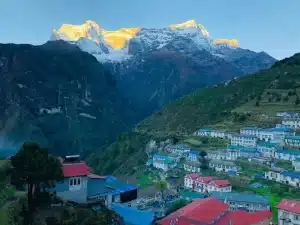
Namche Bazaar, the destination for acclimatization during Everest Base Camp Trek
Have the best guides back up your trip.
The other one of the best trekking tips for Everest Base Camp is to hire the best guides to look after you along the journey. Trekking at a height of 4000 m for 4-5 days is not a joke.
Take the mountains seriously.
You should have someone to look after you who knows the mountains, guides you, provides medication whenever necessary, and prearranges accommodation, meals, and other necessities. Having such trained guides will ensure you have a stress-free trip.
At Heaven Himalaya, we only employ local guides who have received certification from the Tourism Board of Nepal to work as mountain guides.
Make yourself clear about the trails with a professional before the trek.
Don’t just go with no knowledge of the area you are traveling to. One of the best Everest Base Camp trekking tips one should follow is to be familiar with the Everest area, culture, and the mountains.
There are countless resources on the web. You can visit any of them to learn about the region. It just takes a couple of minutes.
Also, consider the below factors, and you will be ready.
- Trail Location
- Time of the year.
- Your fitness level
- The distance you will cover
- Expected Weather
- Characteristics of the tour
Knowing the above information will give you a general idea of how the trip is going to be. Therefore, your sentiments won’t get hurt while you are on the trails.
Be prepared for the outdoors
Trekking guides always complain that visitors don’t prepare themselves for outdoor weather and temperatures. Only a few of them come ready. Don’t be in the majority category.
Come prepared for everything that might come your way, such as low temperatures, bad weather, and basic accommodation.
Kindly note that if you are going on an outdoor trip, then you should know your limits, invest in the right trekking gear, and prepare your body for the trip. Here you will do the same when you plan for a trek to Everest Base Camp.
Don’t use oxygen as a tool.
It’s normal to feel thin air when you are trekking to Everest Base Camp. Thus, if you develop any basic health symptoms due to low oxygen levels in the air, give your body enough time to acclimatize. Don’t push yourself forward using oxygen cylinders.
If you can’t make it to the base camp but should have to do it anyhow, then only use oxygen jars. But use it only for a short period. Don’t push your limits using oxygen cylinders. Please don’t. It’s a security warning and a very necessary travel tip.
Have a satellite phone on the team.
Along the trail of all the Mt. Everest trekking tours, there’s a strong network connection of big telecom companies in Nepal, such as Ncell and NTC. But it can be sketchy sometimes.
It’s a better idea to have at least one satellite phone on the team while doing the Everest Trek. It will allow entire teams to enjoy the trip to isolated regions without worrying about being disconnected from the outside world.
If you are trekking with Heaven Himalaya, our guide will have one for you.
Travel with a team and avoid hiking solo.
One of the most helpful tips for the Everest Base Camp Trek is to travel in a team. Always look for a group of friends or join group departures set by Heaven Himalaya.
Traveling in a team has a lot of benefits:
- Teaches time management.
- Encourages leadership
- It boosts relationships and gives motivation.
- Get a discounted tour price.
- It builds trust and improves performance.
- You will have someone to speak to and share your journey with.
- Ensures safety
- It is easy to get rooms in the guesthouses.
Solo hikes to Everest Base Camp invite a lot of problems. One of which is that you will face difficulty finding rooms in the teahouses during busy seasons.
Also, hiking solo invites distinct dangers as it’s a high-altitude trip, so you need someone to look after you if something goes wrong.
One of the best hiking tips I can give you about a tour to Everest Base Camp is to avoid hiking solo. At least get a guide or a porter to join you on the journey.

Four visitors posing for a photograph during the Everest Base Camp Trek in Nepal.
Bring a head torch.
The Everest region doesn’t have a proper electricity facility. There may be frequent power cuts. So a head torch would be handy in such situations.
During the early morning hike, the torch can be a good option for light. Also, it will be useful when the lights go off in the guesthouses.
If you have the habit of reading books before sleeping, then bring extra batteries too. It will be uneasy to sleep with a book closed on the most interesting part just because there are no lights.
I just can’t sleep in the middle of a page or a paragraph.
Maintain a slow pace while hiking.
Always remember that you are walking at high altitudes. There’s a scant amount of oxygen in the air compared to the sea level. So, maintain a slow pace while hiking to the Everest Base Camp in Nepal.
If you are hiking in a group, set the group pace to the pace of the slowest hiker. If you don’t like it, you can choose to have private trips.
One of the major tips for trekking to Everest Base Camp is to stroll. You only have a few kilometers to walk for the day. So, walk slowly and enjoy the views. This way, you not only have time to soak in beautiful mountain views but also prevent yourself from getting altitude sickness.
Remember, once above 10,000 feet, you should not climb over 1,000 feet in a day unless you are a mountaineer or a very experienced hiker.
Prepare Mentally.
“Mountain climbing is all about being comfortable in uncomfortable places.”—Sir Edmund Hillary.
We aren’t climbing mountains here, but this quote fits the context very well.
One of the best travel tips for a long-distance trek like EBC is to be prepared mentally and build your mental toughness for long hikes.
As most people say, when you are going to do a challenge, 80% of it is mental work and only 20% is physical.
While there are a lot of case studies and advice written on the web about physical training, only a few mention mental preparation for Everest Base Camp Trek. But it’s not a thing to ignore.
If you want a stress-free trekking trip, our only advice for you is to be ready to accept whatever comes your way. Be prepared to live in basic living conditions.
Build your resilience. Imagine yourself there. Create your system. Prepare yourself for every situation that comes your way.
“Be prepared for all your days and meet them all alike.” – Edwin Markham.
Get Insured
While traveling to a new country, you develop many kinds of fears related to your bags, passport, and health as well. Getting insured helps you feel secure and adds a layer of protection against financial loss.
A trip to Everest Base Camp is a high-altitude trek. In the event of any unseen circumstances, like altitude sickness, you need immediate rescue. The mountain rescue mission can be expensive for you. So, if you have bought travel insurance, it will cover your finances.
Getting insured not only helps financially against any kind of loss mentioned in the insurance package but also makes you mentally strong.
Buy travel insurance. It’s the most important tip.
Take it one day at a time.
The most important piece of advice for trekking to Everest Base Camp in Nepal is never to rush. Only climb a few hundred meters in a day.
Don’t just jump days on the itinerary. A 12-day itinerary from Lukla to base camp and back is perfect for everyone.
Other Useful Tips for the Everest Base Camp Trek
Add a trip to Gokyo Lakes if you have extra days.
The Gokyo Lakes is the highest freshwater lake system in the world. There are six lakes. Of these, Thonak Lake is the largest and makes up the majority.
With a few more days included in the itinerary, you will have time to visit the serene Gokyo lakes and hike to Gokyo Ri.
Not to forget, Gokyo Ri is one of the best scenic points in the entire Everest region.
With 3–4 extra days, you can visit Gokyo Lakes via Chola Pass and EBC. After the short Kala Patthar hike, descend to Dzongla and stay for the night. Then hike to Dragnak via Chola Pass. On the very next day, you will go on a trek to Gokyo Lakes.
You can choose to spend as many days as you like there. Some guesthouses and lodges offer exciting scenery from their balconies.
From Gokyo Lakes, trek to Dole and get back to Namche, the Sherpa town on Everest.
Do not rely solely on ATMs; keep cash on hand.
Along the route, you will only find ATMs in Lukla and Namche. However, these ATMs might not work properly or run out of cash because of the many withdrawals. Thus, always carry cash as an option.
In worst-case scenarios, you may have to borrow money from an individual, as we did back in March. Don’t forget to carry some hand cash from Kathmandu to avoid being embarrassed by looking for it.
Besides, along the Everest Base Camp trail, only a few hotels and restaurants accept payment in US currency. Thus, it’s a good idea to carry some cash in local currency, i.e., Nepalese rupees.
Consider Alternates if you have more than a few days.
One of the best Everest Base Camp trekking tips for comfort-seeking trekkers is to strengthen their trekking days.
Usually, it takes 12 days to visit the base camp and go back to Kathmandu. But, if you have time and seek a more comfortable tour, you can add on days and change the itinerary.
Option 1: Begin your trek in Jiri rather than Lukla. (19–21 Days)
Option 2: Begin the hike in Tumlingtar (21–23 days).
Option 3: Trek from Gokyo to Chola Pass and then to Everest Base Camp (17-20 days).
Option 4: Take an Everest Base Camp Trek with Helicopter Return (10–12 Days)
Option 5: Trek to base camp and then trek to three high passes on Everest (18-22 days).
Use better lodges along the journey.
The accommodation options around the Everest trekking trail have improved a lot. You can find basic tea houses with a common room with an outside bathroom or private rooms with attached bathrooms.
If you look for cheap guesthouses, you can find many of them. It will cost you around 3–5 USD. But they are not worth spending money on.
During trekking days, you need a good night’s sleep so that you get enough rest. Thus, a good and clean teahouse having basic facilities is worth looking for. This doesn’t cost you much. You can find many such comfortable teahouses for 10 USD per day.
One of the best Everest Base Camp trekking tips is to always search for a good, comfortable guesthouse for a night’s accommodation.
Bring some more money.
This may sound intentional coming from a trekking agency, but it’s true. Nobody knows what happens next when you are on a trip.
Lukla flights might get canceled because of the bad weather. The only option remaining to get to Lukla will be a helicopter. So, to board a helicopter, you need more money than on a domestic flight. This is a common example.
Likewise, the cost of food items is changeable in the mountains. If it goes over your planned budget, you will have a hard time. So, carrying a little extra money will be helpful in such situations.
Nobody can predict natural calamities and also can’t predict the damage the uncertain rains and cloudy weather do in the mountains.
Suppose you are stuck in a place in the Everest region because of not having any flights. Then you should have some extra money to survive for some more days before you get evacuated.
Relax and have the right attitude.
Completing the Everest Base Camp Trek alone is a tremendous accomplishment for most people. So, getting worried is normal. Especially among beginner trekkers to Everest Base Camp, being at a high altitude is nerve-wracking.
Anxiety and stress make your Everest experience worse. But if you are relaxed, do not think of any difficulties, and just go with the flow, then your journey will become more meaningful.
Here are some motivational quotes for you to keep going on the Mt. Everest trek.
- “After a day’s walk, everything has twice its usual value.” -G.M. Trevelyan
- “There are no shortcuts to any place worth going to.” -Beverly Sills
- Today is your day. You’re off to great places. Your mountain is waiting, so get on your way. ” -Dr. Seuss.
- “For hiking is one of those things that you can only do when you have the determination in you.” -Unknown.
- “It is not the mountain we conquer, but ourselves.” -Sir Edmund Hillary
Talk with the locals.
Traveling to Everest is fun and exciting. You will meet a lot of fellow trekkers and the local sherpas on your way up to the base camp.
As the saying goes, “No man can live on an island.” Meeting new people and learning about their culture and traditions is a great way to enjoy the trip.
Thus, while you are on the trip, take your time to learn about the local culture and talk with the locals. To do so, we highly recommend learning a few of the Nepali words before your trip.
Here are a few helpful tips to start a conversation with locals on the Everest Base Camp route.
- Make eye contact and smile.
- Say Namaste and ask where their village is.
- Ask about their daily life.
- Ask for local advice.
Talk to locals and listen to their experiences and lifestyle.
Choose the best time to trek.
The weather along the base camp route highly influences your Everest experience. Bad weather can make your travel adventure the worst. Hence, choosing the right weather for your journey is indeed necessary.
The best months for the Everest trip are March to May and September to November.
During these months, the weather is clear, and the temperatures are mild with a clear sky. Keep in mind, choosing the best month to trek is one of the best things to do before planning a trek to Everest Base Camp.
Check out the best time to trek to Everest Base Camp in Nepal.
Don’t fear the suspension bridge.
There are two–four suspension bridges along the Everest Base Camp route in Nepal. Most of such bridges are above the fast-flowing rivers at just about 25 to 50m above the ground level.
If you’re afraid of heights, this is a great opportunity for you to confront your fears and experience what it’s like to be there.
If you still can’t do it, close your eyes and go hand in hand with the trekking guide.
Anyway, we recommend you be prepared to cross the suspension bridge, as it’s the only way to stay on track in most places.
Always respect the local culture.
Travelers must commit to respecting the local Sherpa culture while visiting the Everest region.
It’s an important travel tip!!
Even if you don’t agree with a certain tradition or action, remember your role as a visitor and follow their lead.
Allow local actions to guide all of your behaviors with Khumbu culture and traditions. Never hurt local sentiments about their culture and traditions.
If you don’t know about them, you have nothing to worry about, as your trekking guide will be a medium to connect you to the local villagers.
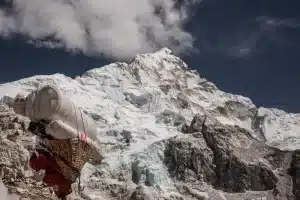
A Local Sherpa carrying a heavy load on the Everest Base Camp route.
Visit Tengboche Monastery.
If you have your Everest trekking route planned via Tengboche, then you should visit the Buddhist monastery there. The Tengboche Monastery is the largest Buddhist religious foundation in Khumbu.
If you enter the monastery, you find a different world of peace. The monks there give you blessings. And above all, you draw yourself into spirituality.
Solo Everest Base Camp hiking tips for a safe and enjoyable trek
Planning a solo hike? Or, are you looking for solo Everest Base Camp hiking tips?
Whichever the question is, you’re in the right place!
Solo hiking can be terrifying sometimes, for both men and women. However, this is no longer the case. The route to Mt. Everest is safe and well-established. But you still need to get a porter and a guide even while hiking solo.
Some other solo hiking tips for the Everest Base Camp Trek are:
- Be honest about your fitness level. Don’t brag. It’s a long-distance hike and also one of the hardest treks in the world.
- Don’t just go off the trail. Stay on it. Follow your guide. If you get to customize the itinerary, You should first get approval from your trekking guide.
- Know the potential threats of animals, thieves, and extra cold.
- Let your loved ones know about your itinerary. Tell them about the place and your plan to travel there.
- You should have an Everest Hiking Map. You can easily buy a map in a shop in Thamel, Kathmandu for a few dollars.
- Pack solo safety gear such as a small knife and a head torch.
- Take selfie photos at each destination and send them to someone you love.
The 70 Everest Base Camp trekking tips listed above will help you improve your travel experience while on the journey. The above travel hacks and ideas help you trek to the base camp in every season, including winter and monsoon.
If you have already been to Everest and have more successful travel tips and ideas, then you can mention those in the comments.

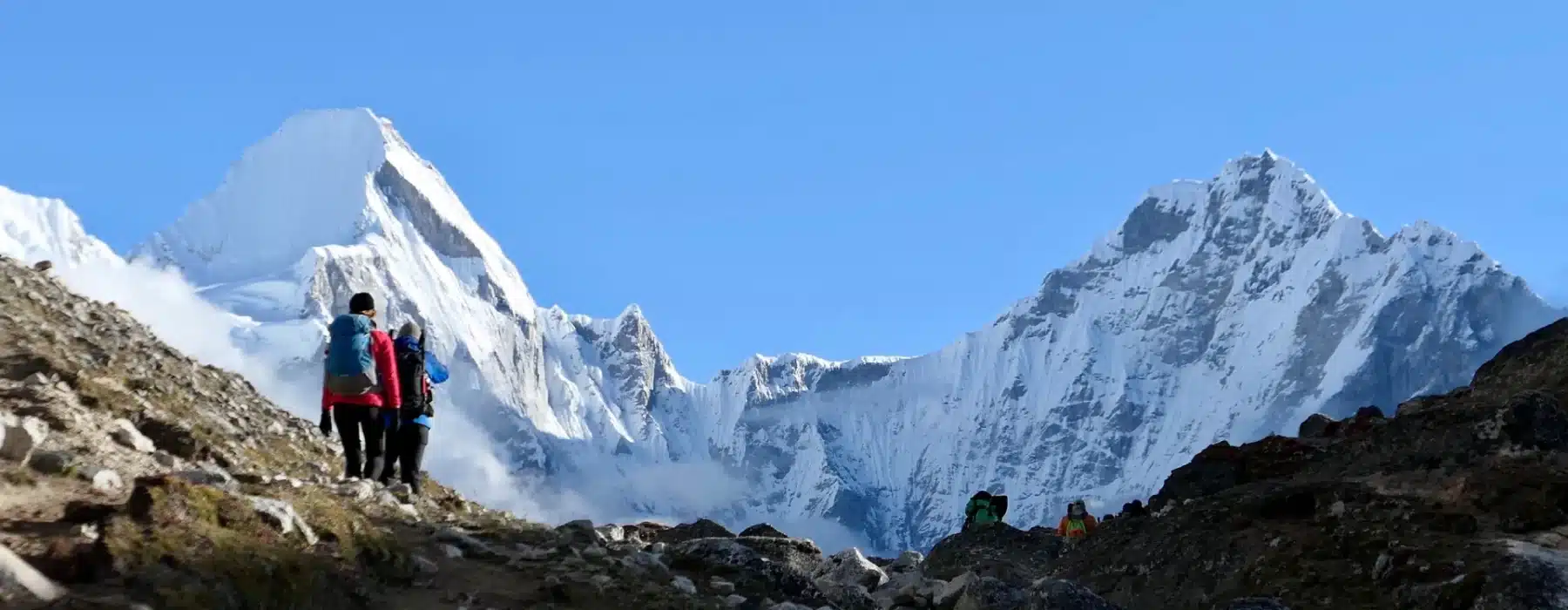


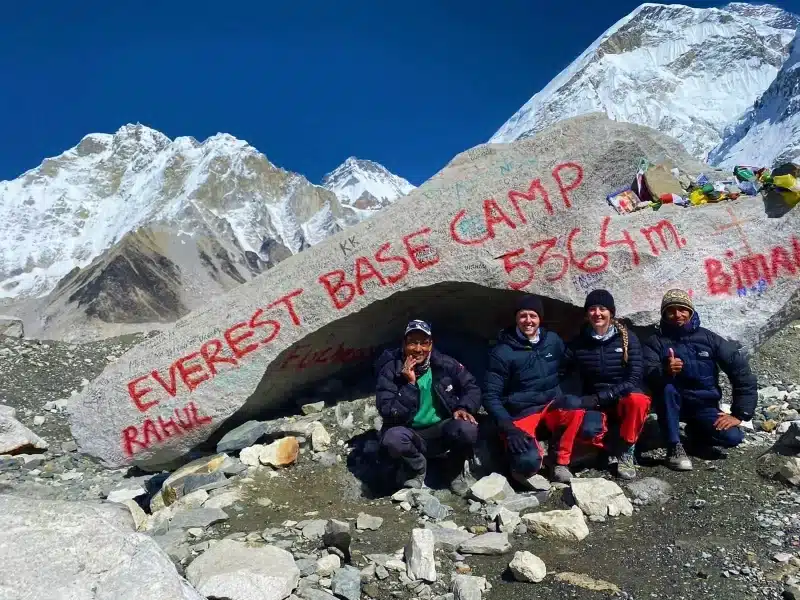



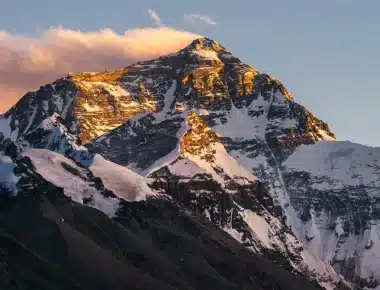
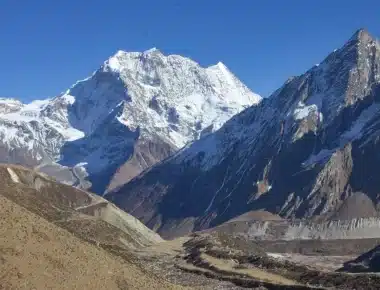

0 Comments